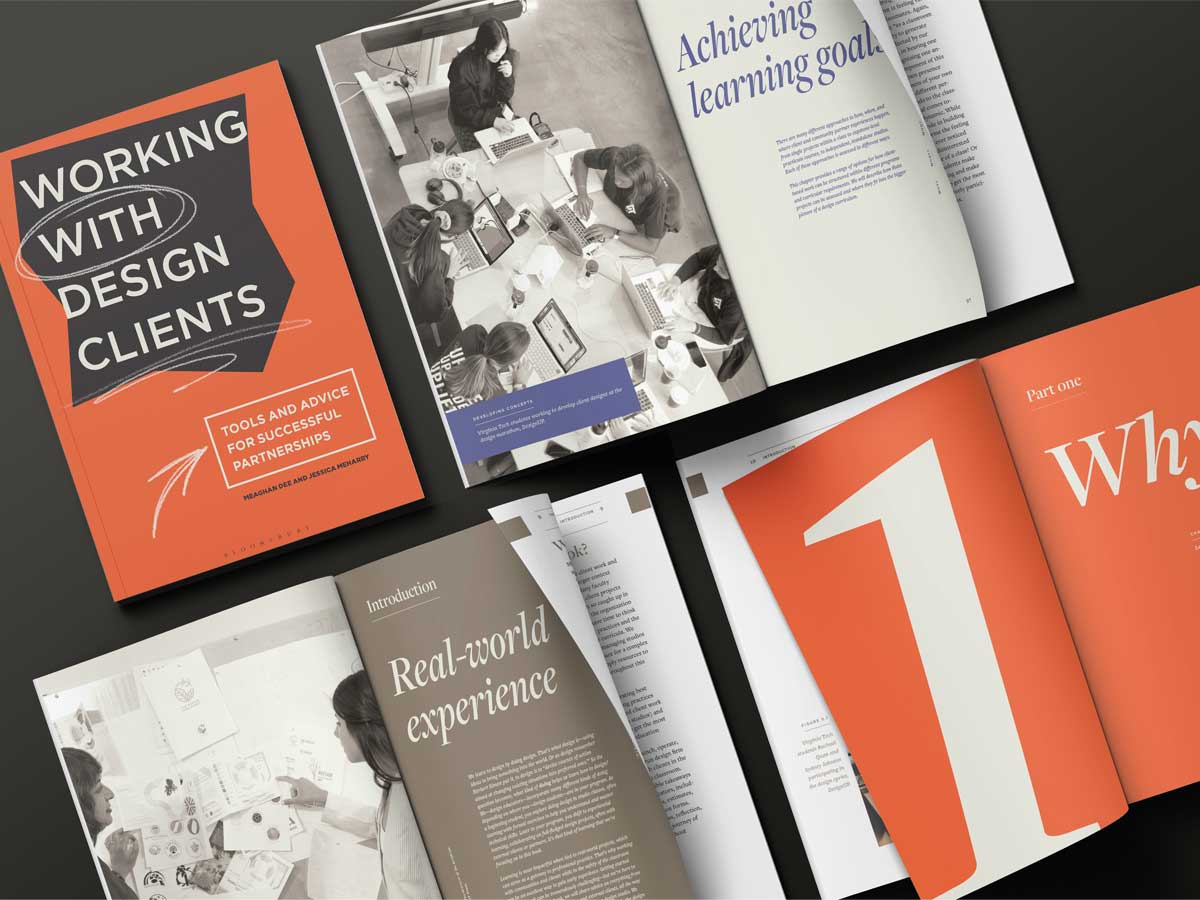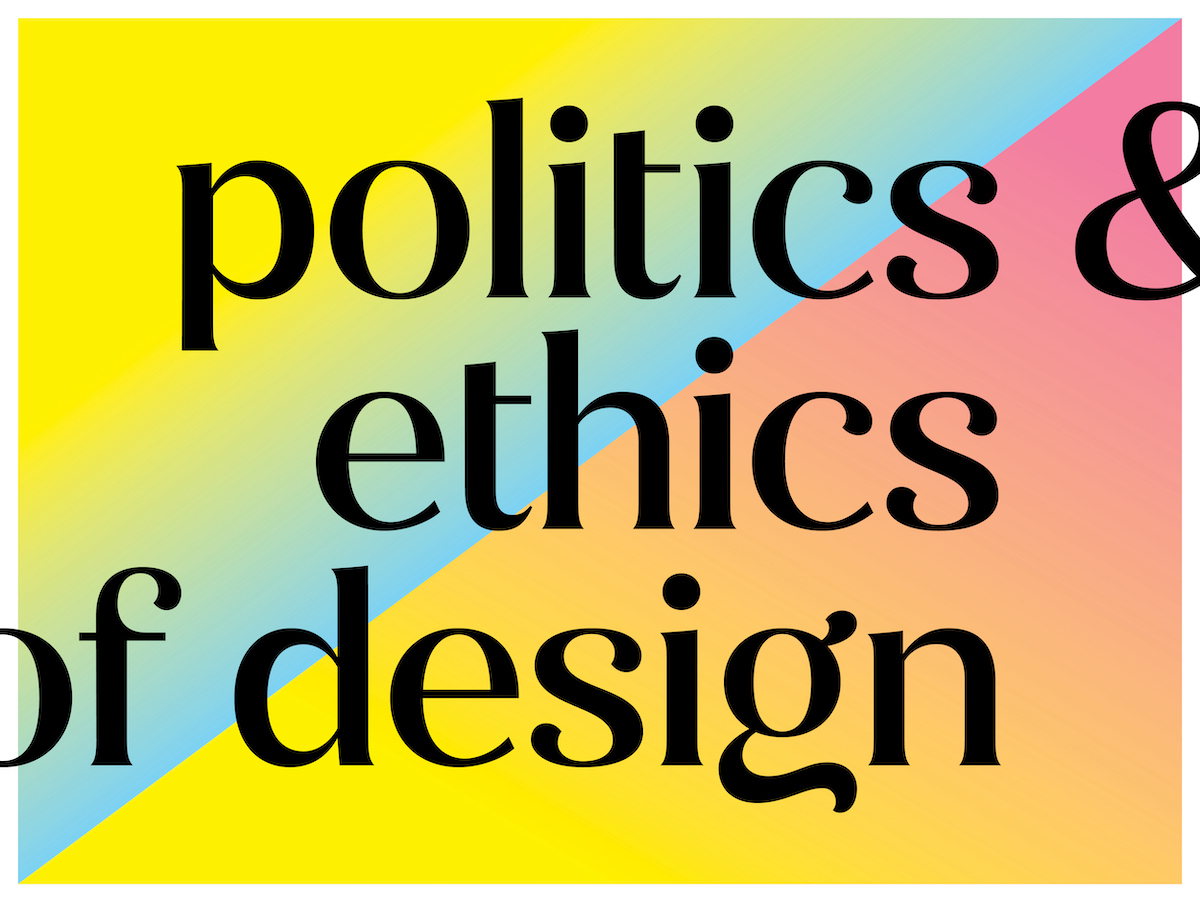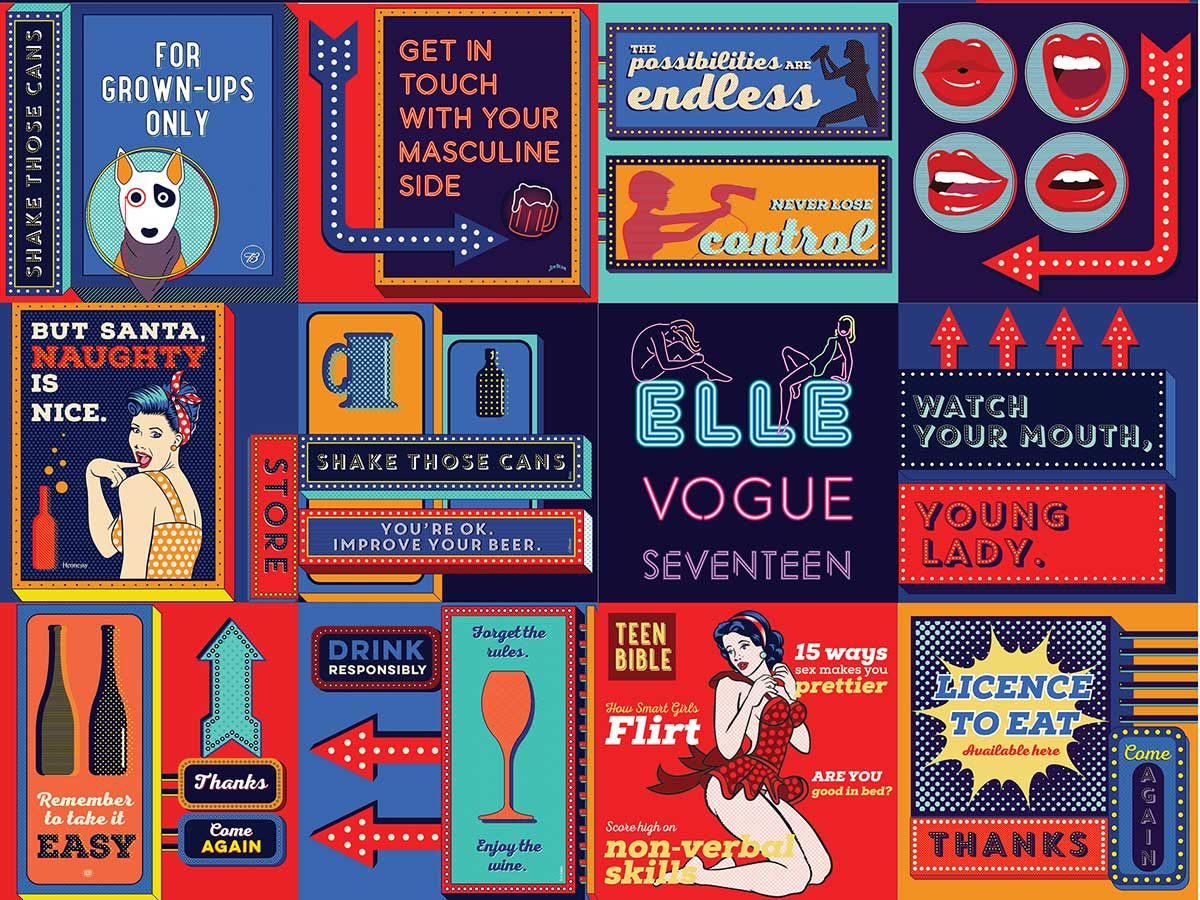Meaghan Dee
Associate Professor
Virginia Tech
Jessica Meharry
Visiting Assistant Professor
Institute of Design at Illinois Tech
Working with Design Clients: Tools and Advice for Successful Partnerships is a book for design students and educators seeking to integrate real-world client projects into their curriculum. Born from extensive research, interviews, and the authors’ years of experience running a successful student-run design studio, this book offers practical advice, tools, and frameworks for navigating the complexities of client-based learning.
The studio is a core strand of design education, and working with real clients is one of the most valuable ways for students to develop their professional design practice skills.
The book is a practical guide to working on client and community work in the design studio – how to collaborate with and connect to communities, find and retain clients, and manage real-world design problems.
The book is structured in four parts:
- Why: Establishes the pedagogical value of client projects, emphasizing their role in fostering industry connections, experiential learning, and student empowerment.
- What: Focuses on the practicalities of community engagement, client selection, and structuring studio experiences to achieve learning goals.
- Who: Examines the roles and responsibilities of students, faculty, and clients, highlighting the importance of effective communication, collaboration, and articulating value.
- How: Offers guidance on launching and managing a student-run design studio, including financial management, operational logistics, and planning for long-term sustainability.
This is the book Jessica and Meaghan wish existed when they were thinking about starting a design studio and took over a design studio (respectively). This book addresses a critical gap in design pedagogy literature by providing a comprehensive resource for educators seeking to bridge the gap between academia and professional practice.
Key contributions include:
- Practical Guidance: Offers concrete advice and actionable strategies for implementing client-based projects, from finding clients to managing budgets to assessing student learning.
- Diverse Perspectives: Incorporates insights from numerous interviews with design educators, students, and industry professionals, representing a range of institutional contexts and pedagogical approaches.
- Emphasis on Ethics and Community Engagement: Provides a framework for ethical client interactions, emphasizing the importance of designing with communities rather than for them.
- Focus on Student Empowerment: Highlights the role of client projects in fostering student agency, leadership, and professional development. (Chapter 3 of this book also features Najla Mouchrek’s Model for Empowerment in the Transition to Adulthood)
- Support for Student-Run Studios: Offers dedicated chapters on launching, managing, and sustaining student-led design studios.
This book aims for design educators to:
- Integrate client-based projects into their courses.
- Develop effective strategies for finding and managing clients.
- Create meaningful learning experiences that foster student growth and professional preparedness.
- Build and sustain successful student-run design studios.
- Promote ethical and socially responsible design practice.
The book also hopes to empower design students to:
- Confidently work with “real world” clients and community partners.
- Be more prepared to graduate and enter industry.
- Understand dynamics of client interactions.
By providing students and educators with the necessary tools and knowledge, this book will contribute to a more engaged, impactful, and relevant design education that better prepares students for the challenges and opportunities of the professional world.
Methodology
The book used a mixed-methods approach, combining:
- Literature Review: Synthesized existing research on design pedagogy and experiential learning.
- Surveys: Gathered quantitative data on client-based practices in design programs across the country and around the world.
- Interviews: Collected qualitative insights from design educators, students, and industry professionals.
- Case Studies: Via interview, examined successful examples of client projects and student-run studios.
- Authors’ Expertise: Leveraged the authors’ years of experience in design education and running a student-led studio.
Overall, this book represents a culmination of the authors’ passion for design education and their commitment to preparing students for successful and meaningful careers. It is a resource they wish they had when they first embarked on their journey. They hope it will serve as a valuable guide for fellow educators and their students and contribute to a more vibrant and impactful design education landscape.
This project was the 2024 Design Incubation Educators Awards runner-up recipient in the category of Scholarship: Publication.
Biography
Meaghan A. Dee is an Associate Professor and Chair of Graphic Design at Virginia Tech, where she also serves as a Senior Fellow at the Institute of Creativity, Arts, and Technology. Her work centers on connecting communities through storytelling and immersive design experiences and by fostering collaboration between students, faculty, and industry professionals. Meaghan sees design as a tool for engagement, communication, and innovation.
In addition to her role at Virginia Tech, Meaghan is a docent emeritus for the Letterform Archive in San Francisco and served as co-chair for the AIGA Design Educators Community (AIGA DEC) Executive Board—a group dedicated to supporting and connecting design educators across the world. She earned her Bachelor’s degree in Graphic Design from the University of Illinois at Champaign-Urbana and a Master of Fine Arts in Visual Communication Design from Virginia Commonwealth University.
Jessica Meharry is a designer, researcher, and educator who develops justice-oriented design methodologies for professional practice. She teaches courses in the politics of design, critical contexts of design, and the philosophical context of design research. Jessica received a PhD from the Institute of Design (ID), an MFA from Savannah College of Art and Design, and a bachelor of science from Northwestern University. Jessica’s cross-disciplinary research interests focused on designing for equitable economies, strategizing processes that frame equity as an innovation driver, and developing inclusive design management pedagogy. Jessica’s current research projects include the development and testing of an anti-oppressive design framework focused on information and communication technologies. She is also a collaborator on a research project led by Hillary Carey, PhD candidate at Carnegie Mellon University, in which they’re using design methods to explore anti-racist futures in organizational contexts.


